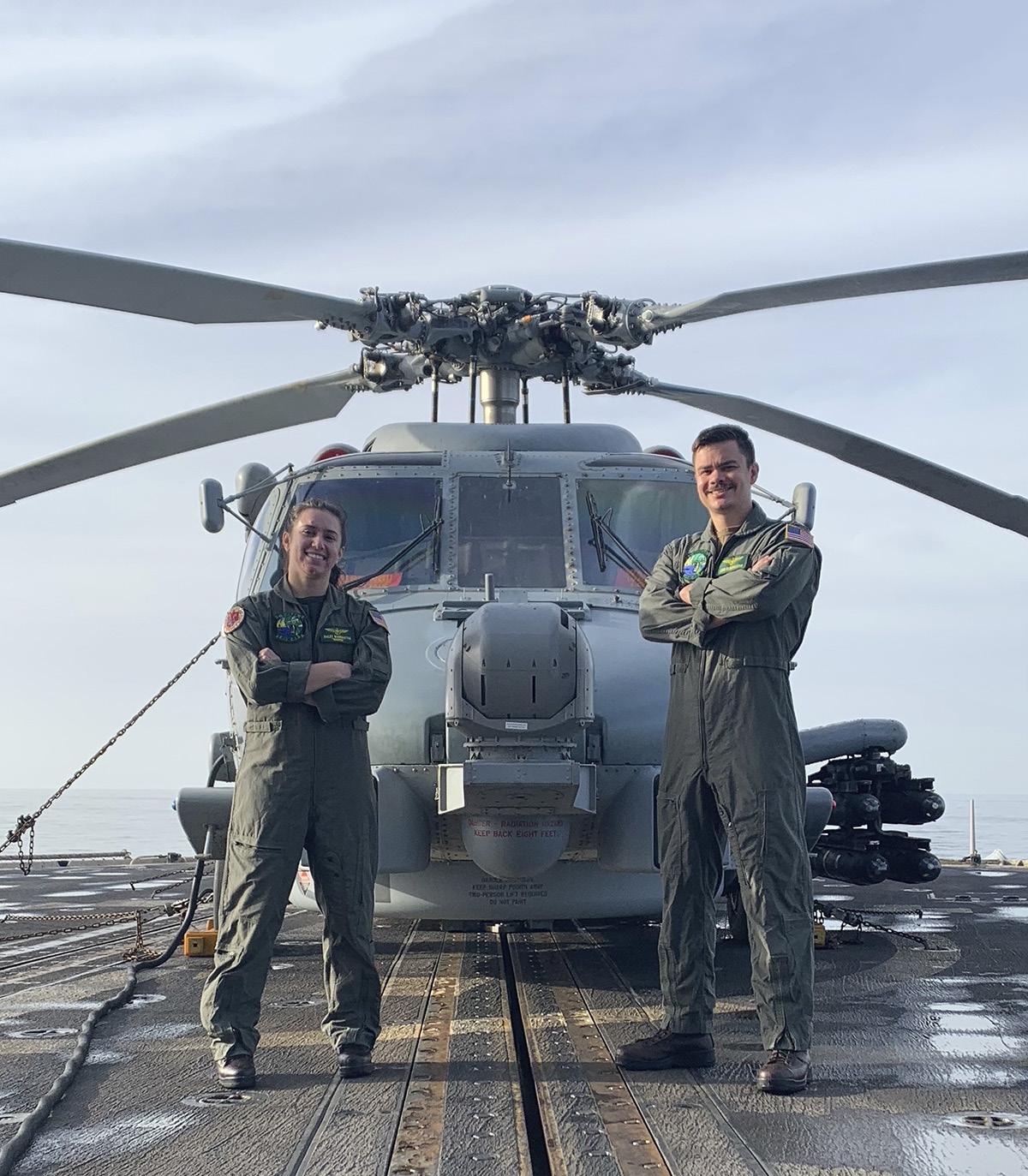Features
HM-12 the Origin of the U.S. Navy's H-53 Operations By CAPT Russell E. Berry Jr., USN (Ret.) Editor's Note: CAPT Berry passed away on March 26, 2021. He was a longtime member of NHA and had frequently contributed to Rotor Review. In his honor and memory we reprint an article that was a particular favorite of his. It was published in the Summer 1986 Rotor Review #26.
I
t is interesting to look back at the evolutionary growth of the helicopter in fleet operations and the continuing introduction of newer and more capable aircraft crewed by an even younger looking crop of aviators and aircrew When I learned that the Summer Edition of Rotor Review was to be focused on the H-53 community I decided it was time to sit down and relate the origins of the H-53 operations in the U.S. Navy from my perspective as one of those who was actually there at the start. My involvement with the H-53 began during the final throes of my course at the U.S. Naval Test Pilot School as a member of Class 49. A former HS-11 SH-3A pilot. I was assigned to fly the CH-53A for my Naval Preliminary Evaluation (NPE) exercise. My first flight in April 1968 thus began six years of intimate contact with the H-53 and the Airborne Mine Countermeasures (AMCM) mission. Early AMCM Efforts After graduation from TPS I was assigned as: the lead H.53 engineering test pilot, in the service ·Test Division of The Naval Air Test Center (NATC). In August 1968, I found myself headed to the Sikorsky· facility in Stratford Connecticut to conduct a real NPE of the CH-53A Emergency Mine Countermeasures Mission systems. The object of the Emergency AMCM mission system was to put deployable AMCM equipment "kits" aboard the amphibs from which the Marine H-53s routinely operated. In time of need Marine crews would equip their H-53's with the AMCM kits and be ready to sweep. Seems simple enough on the surface but it didn’t exactly turn out that way. The training requirements for the “black gang" in the after station for a MK-I03 wire sweep mission proved to be a little more than could be handled on an "emergency'' or tertiary mission basis. After several weeks or training with Sikorsky test pilots and crews we were deemed fully capable of rousing the ire of every lobsterman in Long Island Sound (MK-1O4 wire sweeps can reap some good eating at times), The NPE was completed atter the second try and Sikorsky went back to the drawing boards to incorporate some fixes. Those early minesweeping evolutions were a fairly coordinated effort between Sikorsky. NAVAIR, NATC. Rotor Review #153 Summer '21
and the folks from Panama City. Florida. This latter group continuously suffered from the ·”alphabet soup disease”, having been known through the years as NADDU (Naval Air Mine Defense Development Unit). NSRDL (Naval Ships Research and Development Laboratory). and NCSL (Naval Coastal Systems Laboratory), The OPEVAL for the H 53 Emergency AMCM system was held at Panama City in March 1970, and included Marine Aircrews from HMX-t as well as our “experienced" crews from NATC. HM is Conceived The HM and HSL communities were actually birthed as a result of the same CNO initiative. At CNO direction a series of conferences and meetings were held al CINLANTFLT and CINPACFLT in t970 with a focus towards capturing the exploding versatility of the helicopter to enhance the operational capability of the surface combatant forces. Three different programs were initiated as a direct result of these conferences. HS- I5 was established to participate in the Sea Control Ship Project The original H-2/DV-98 project at the Naval Air Development Center (NADC) became the genesis of the SH-2D/F/G LAMPS MK 1 program and eventually the SH-60B LAMPS MK Ill program. At the same time. AMCM. which had been drifting along in the backwaters of the fleet with small RH-3A detachments in both HC-6 and HC- 7, received a dose of intensity· 'The pending transfer of the surface ship MSOs to the Naval Reserve Force presented the challenge necessary to force a decision to bring the enhanced AMCM capabilities of the H-53 into the U.S. Navy operating inventory. The fact that the capability was there to be tapped at all rested almost solely with Mr. Bill Emshwiller, of Naval Air Systems Command (NAVAIR), the true father of AMCM. I was a participant at an AMCM coordinating session at CINLANTFLT in July t970. I raised perhaps an inordinate amount of controversy at that session,. essentially telling the brass that they didn’t know what they were doing. It appears that they decided that if I was damn sure of what I was doing, might as well get thrown in the middle. HC-6 Det 53 As a result, I soon found my orders to HA(L)-3 cancelled and a new set in my hands to HC-6 NAS Norfolk as part of “Det 53”. HC-6 Det 53 was comprised of officers and 64









































